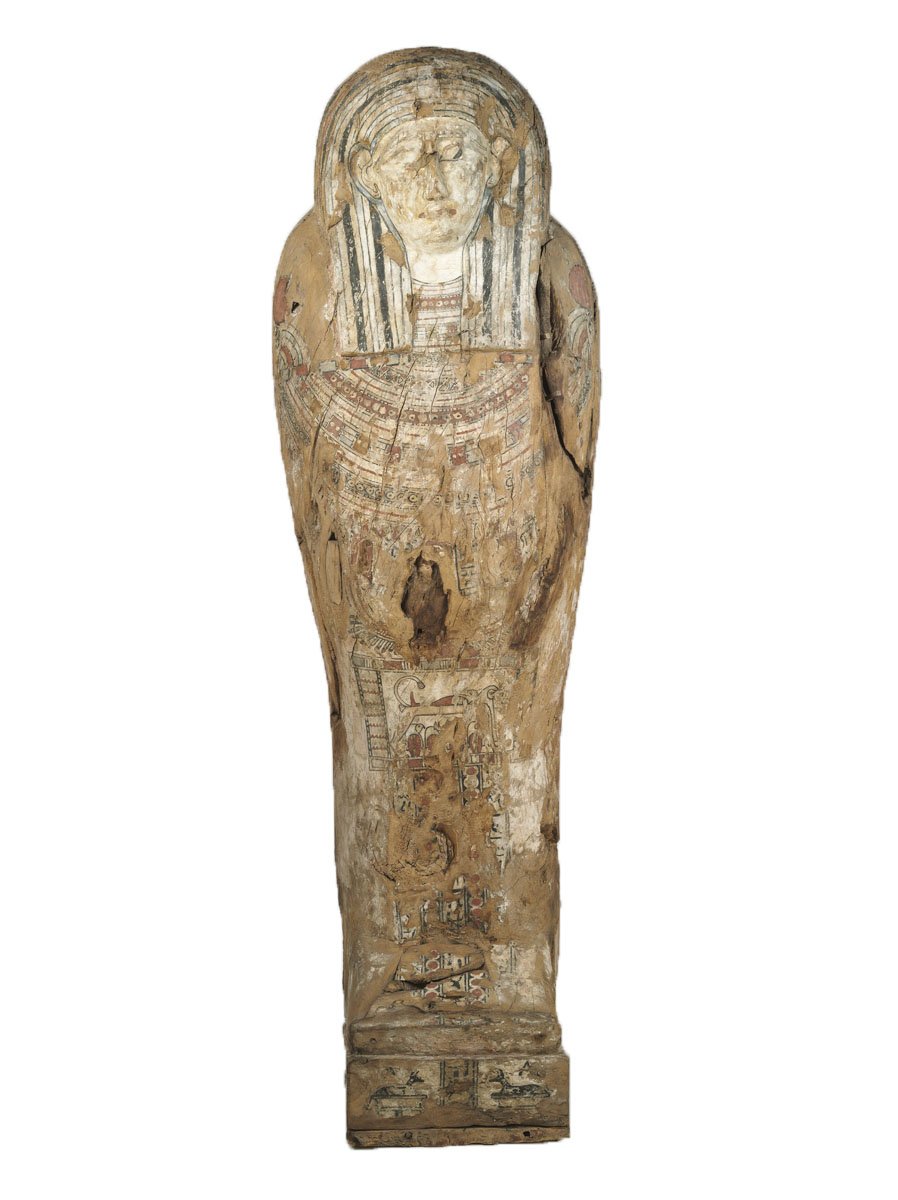
Anthropoid Coffin
Egyptian Art
| Place of production | Egypt |
|---|---|
| Date | 7th-1st centuries B.C. (664-30) |
| Object type | sculpture |
| Medium, technique | bronze |
| Dimensions | 6.6 x 2.4 x 7.8 cm |
| Inventory number | 51.1314 |
| Collection | Egyptian Art |
| On view | This artwork is not on display |
Apis, “the king of all sacred animals” in Egypt is depicted in this fragmentary bronze statue, which can be attributed to the Late Period. Thanks to the numerous positive characteristics attributed to bulls (procreative power, unfettered life energy), the Apis bull and its cult became part of the rituals connected to Egyptian kingship as early as the beginnings of the country’s written history. In the Late Period, votive bronze statues were produced and erected en masse to pay tribute to the Apis bull, which was considered the living image and earthly manifestation of Ptah.
The statuette depicts the sacred animal with its standard iconography: it could have stridden forward with its missing left foreleg. Its body has been carefully fashioned, especially in the area of the chest and ears. The sun disc between the horns is missing, however, most part of the uraeus snake emerging from it can be seen. Certain parts of the shroud covering the back of the bull can be also traced well. There is a pin on the bottom of the remaining part of the pedestal.
This record is subject to revision due to ongoing research.